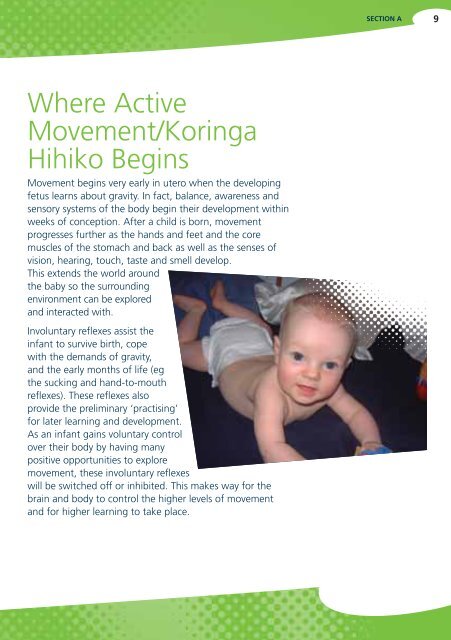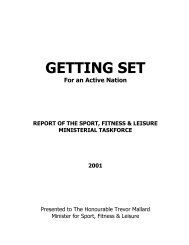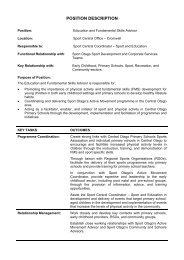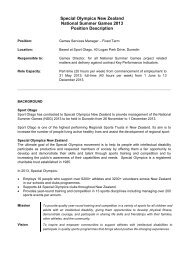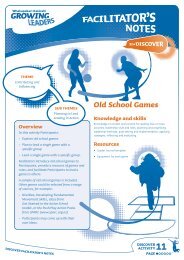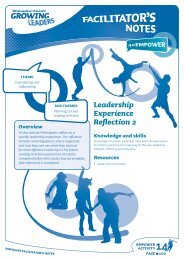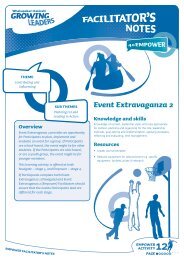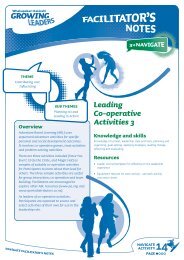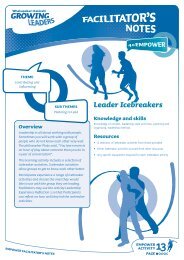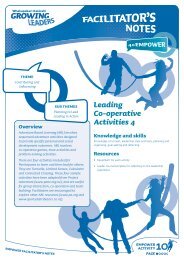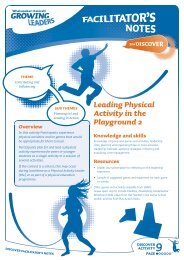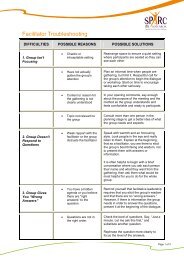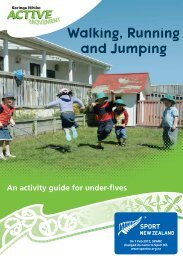An Introduction to Active Movement Koringa Hihiko - Sport New ...
An Introduction to Active Movement Koringa Hihiko - Sport New ...
An Introduction to Active Movement Koringa Hihiko - Sport New ...
You also want an ePaper? Increase the reach of your titles
YUMPU automatically turns print PDFs into web optimized ePapers that Google loves.
SECTION A<br />
9<br />
Where <strong>Active</strong><br />
<strong>Movement</strong>/<strong>Koringa</strong><br />
<strong>Hihiko</strong> Begins<br />
<strong>Movement</strong> begins very early in utero when the developing<br />
fetus learns about gravity. In fact, balance, awareness and<br />
sensory systems of the body begin their development within<br />
weeks of conception. After a child is born, movement<br />
progresses further as the hands and feet and the core<br />
muscles of the s<strong>to</strong>mach and back as well as the senses of<br />
vision, hearing, <strong>to</strong>uch, taste and smell develop.<br />
This extends the world around<br />
the baby so the surrounding<br />
environment can be explored<br />
and interacted with.<br />
Involuntary reflexes assist the<br />
infant <strong>to</strong> survive birth, cope<br />
with the demands of gravity,<br />
and the early months of life (eg<br />
the sucking and hand-<strong>to</strong>-mouth<br />
reflexes). These reflexes also<br />
provide the preliminary ‘practising’<br />
for later learning and development.<br />
As an infant gains voluntary control<br />
over their body by having many<br />
positive opportunities <strong>to</strong> explore<br />
movement, these involuntary reflexes<br />
will be switched off or inhibited. This makes way for the<br />
brain and body <strong>to</strong> control the higher levels of movement<br />
and for higher learning <strong>to</strong> take place.


